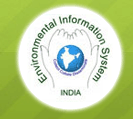| |



 

|
|
|
|
|
| Panchayat, Environment and Related Issues |
Documentation and Data of Department of Agriculture and Corporation
(2006-07) in Panchayat, Environment and related Issues
Overview:
- During the current year, the following five new initiatives were approved, namely, (i) the National Bamboo Mission; (ii) Forecasting Agricultural Output Using Space, Agri-Meteorology and Land-based Observation (FASAL); (iii) Capacity Building to Enhance the Competitiveness of Indian Agriculture and Registration of Organic Products Abroad; (iv) Jute Technology Mission; and (v) Terminal markets under the National horticulture Mission.
- An outlay of Rs 800.00 crore was allocated at the Budget Estimate (BE) stage for the Annual Plan 2006-07. This constituted an increase of 14.85 per cent over the BE of Rs 179.32 crore that was provided for the year 2005-06.
Functions and Organizational Structure:
- The Department of Agriculture and Cooperation formulates national policies and programme for achieving rapid agricultural growth through the optimum utilization of India’s land, water, soil and plant resources.
- The Department is organised into 24 divisions and a Technology Mission on Oilseeds, Pulses and Maize. It has 4 attached offices; 21 subordinate offices; 2 Public Sector Undertakings (PSUs); 7 autonomous bodies; and 11 national-level cooperative organisations under its administrative control. In addition, 2 authorities, namely, the Protection of Plant Varieties and Farmers’ Rights authority; and the National Rain-fed Area Authority have been set up.
- In order to allow easy access for citizens to the information stored in the Department, the manuals mandated under Section 4(i)(b) of the Right to Information Act, 2005,have been posted on the Department’s website (agricoop.nic.in).
- During the year 2006-07 (up to 31 December 2006), 239 applications were received in this Department under the Right to Information Act, 2005,of which 217 were disposed off during the same period.
Economics and Statistics:
- The Minimum Support Prices (MSPs) for kharif crops (for 2006-07) were announced on 27 July 2006.The MSP of oilseeds and pulses has been suitably increased. The MSP of the Niger seed has been raised by Rs 20 per quintal, followed by an increase of Rs10 per quintal in sesamum, arther and Soya bean (yellow), while the MSP of jower, bajra and ragi has been raised by Rs 15 per quintal has been given for paddy. An additional incentive bonus of Rs 40 per quintal is payable on the procurement of paddy between 1 October 2006 and 31 March 2007.The MSP for both varieties of cotton has been raised by Rs 10 per quintal.
- The MSP of Rabi crops of the 2006-07 season, to be marketed in 2007-08,were announced on 27 and 30 October 2006.The MSP of wheat has been fixed at Rs 750 per quintal as against Rs 650 per quintal during the previous year. The MSP of Barley has been raised by Rs 15 per quintal and that of gram and masur (lentil) by Rs 10 per quintal.
- In order to strengthen the early season crop estimation capabilities and validate the estimates of area in selected crops, the Department of Agriculture and Cooperation in association with the Department of Space have jointly conceptualized FASAL.Administrative approval for implementation of the scheme was issued in August 2006.
Crops:
- The production of Kharif food grains during 2006-07 is estimated at 209.17 million tones (second advance estimates) which is higher than 208.59 million tones estimated during 2005-06.The production of rice is estimated at 90.13 million tones, as compared to 91.79million tones, as compared to 91.79 million tones during the previous year. The production of wheat is estimated at 72.50 million tones, which is higher than the previous year’s production of 34.06 million tones.
- Sugarcane production is estimated to be higher, at 315.53 million tones as against 281.17 million tones during the previous year. Cotton production is estimated at 209.64 lakh bales during 2006-07,as against 184.99 lakh bales during 2005-06.The production of jute and mesta during the year 2006-07 is estimated at 113.980 lakh bales of 180 kg each, as against 108.40 lakh bales of 180 kg each during 2005-06.
- In order to promote the cultivation of oilseeds, 13,56,660 seed mini kits have been allocated to different States during 2006-07.The number of seed mini kits allocated for promoting the cultivation of pulses is 7,47,994.
Seeds:
- The total availability of quality seeds in India during 2005-06 was 140.51 lakh quintals, as against the requirement of 107.08 lakh quintals. The availability of quality seeds for the year 2006-07 is 148.18 lakh quintals as against the requirement of 128.76 lakh quintals.
- The Seeds Bill 2004,which will replace the Seeds Act, 1966, has been introduced in the Rajya Sabha and is currently under consideration of the Parliamentary Standing committee on Agriculture. The salient features of the proposed legislation are: compulsory registration of seed varieties, which will facilitate the promotion of the private seed industry: and provision for the regulation of genetically modified crop seeds.
- The Protection of Plant Varieties and Farmers’ Rights Authority to safeguard the traditional rights of farmers and at the same time protect the plant breeders’ rights for stimulating the investment for research and development and to facilitate the growth of the seed industry in India has started functioning.
- The national Seeds Research and Training Centre, Varanasi (Utter Predesh), to function as a seed quality control and referral laboratory and training centre for seed quality control personnel, has started functioning.
Integrated Nutrient Management:
- India is the third largest producer and consumer of fertilizers in the world after China and the USA and contributes about 11.4 per cent and 11.9 per cent to the total world production/consumption of Nitrogen Phosphate Potash (NPK) nutrients respectively. In India, however, the consumption of fertilizer nutrients per hectare of land is less than in some of the developing countries.
- The fertilizer consumption of NPK nutrients during 2005-06 was 203.40 lakh metric tonnes, which is the highest ever achieved. During 2006-07,the consumption of NPK nutrients is expected to be more than 220 lakh metric tonnes.
- The Government of India is promoting soil test-based balanced and judicious use of chemical fertilizers in conjunction with bio-fertilizers and organic manures to maintain soil health and its productivity under the programme of Integrated Nutrient Management through various schemes.
- To safeguard the interest of farmers, bio-fertilizers and organic fertilizers have been brought under the statutory regulatory mechanism.
- A new provision has been made under the Fertilizer (Control) Order, 1985,for the approval of customized fertilizers to promote site-specific nutrient management.
Plant Protection:
- The Indian mango has received market access to Japan. Substantial progress has also been made to enable the export of mangos to the USA.A protocol on the export of Basmati rice to China was signed on 21 November 2006.
- There are 35 new Plant Quarantine Stations that have been established, with additional manpower. In this regard, 40 new posts have been sanctioned.
- Under the Australia Fumigator Accreditation Scheme (AFAS), 96 persons including nine plant quarantine officers were trained.
- During the year, 44 pest control agencies were accredited under National Standard for Phytosanitary Measure (NSPM-12).
- There were 16 facilities of Forced Hot-Air Treatment (FHAT) that were accredited during the year. A total of 36 FHAT facilities have been accredited under NSPM-15.
- The pest/disease situation was monitored regularly in the States and an area of 462 thousand hectare has been covered as against the targeted area of 816 thousand hectare.
- Up to 31 October 2006, 73.30 lakh of bio-control agents were mass produced in the laboratories and released to neutralize insect pests in rice, cotton, sugercane, pulses, vegetables and oilseeds against the targeted release of 190.00 crore bio-control agents.
- With a view to boosting the export of pesticides for export of pesticide, the guidelines for the registration of pesticides for export have been simplified.
- The guidelines on procedures for registration of bio-pesticides have been revised with a view to ensuring that the process of registration is finalized on a priority basis. This would make the entire functioning of the Registration Committee more efficient, effective and objective.
- An area of 2.85 lakh hectare has been covered up to 31 October 2006,as against the targeted area of 7.00 lakh hectare in different States, against various insect pests through the augmentation and conservation of bio-control agents.
- A demonstration-cum-training programme has been launched by organizing 344 Farmers’ Field Schools (FFSs) in rice cotton, vegetables, pulses, maize, sugercane, groundnuts and fruits during the kharif season of 2006 in 28 States and Union Territories (UTs). A total of 1,451 agriculture extension officers and 10,320 farmers were trained in integrated Pest Management (IPM) approach during the year 2006-07,up to 31 October 2006.
- Under the Human Resource Development Programme, 36 persons were trained: 31 in the two-day training course and 5 in a five-day refresher course for the benefit of pesticide dealers. These included persons from Non-Governmental Organisations (NGOs), graduate/postgraduate students, IPM lead farmers, private entrepreneurs, area extension officers etc., during Kharif 2006-07 against the same target.
- Under training in the area of plant protection, 17 training courses were conducted at the national Plant Protection Training Institute, Hyderabad during the year 2006-07,in which 390 personnel were trained on different aspects of plant protection up to 31 October 2006.
- In order to augment the existing 26 Central Integrated Pest Management Centres (CIPMCs) in 28 States and one UT, six new CIPMCs have been established.
Agricultural credit:
- Ground level credit flow for agriculture and allied activities increased from Rs 125309.00 crore in 2004-05,to Rs 167775.00 crore in 2005-06.As against the credit flow target of Rs 175000.00 crore during 2006-07, Rs 149343.16 crore was achieved up to December 2006,forming 85.34 per cent of the target.
- The Kisan Credit Card Scheme has also been extended to the borrowers of long-term cooperative credit.
- The rate of interest on crop loans up to the extent of Rs 3.00 lakh has been reduced to 7 per cent per annum.
- For farmers who have availed of crop loans from commercial banks and Primary Agricultural Credit Societies (PACS) for Kharif and Rabi 2005-06,an amount equal to two percentage points of the borrowers’ interest liability on the principal amount up to Rs 100,000 has been credited to his/her bank account before 31 March 2006.
- A rehabilitation package of Rs 16978.69 crore has been announced for 31 specially distressed districts in the States of Andra Pradesh, Maharastra, Karnataka and Kerala, and will be implemented over a period of three years.
- A package for the revival of short-term rural cooperative credit involving financial assistance of Rs 13596.00 crore has been approved.
- During the last 14 crop seasons (i.e., from Rabi 1999-2000 to Kharif 2006), over 858 lakh farmers were covered over an area of over 1390 lakh hectares insuring a sum amounting to Rs83327.45 crore.
Agricultural Extension:
- The Extension Reforms Scheme based on the Agriculture Technology Management Agency (ATMA) model is the most important initiative for revitalization of the extension system. ATMAs have been, till January 2007,established in 261 districts of 27 states and 2 UTs.
- The ATMA programme provides that a minimum of 30per cent resources is to be utilized for women farmers. In order to provide the necessary impetus to gender mainstreaming, the erstwhile Women’s Cell has been rechristened the National Gender Resource Centre in Agriculture (NGRCA). This Centre has also been mandated to perform functions of the Gender Budgeting Cell. The NGRCA has taken up several studies to promote gender mainstreaming in the Department of Agriculture and Cooperation.
- The scheme Mass Media Support to Extension aims to utilize the impressive infrastructure of Doordarshan (DD) and All India Radio for producing and broadcast five or six days a week is being produced by 36 narrowcasting centres (with high/low power transmitters), 18 regional kendras and DD’s national channel, as well as 96 FM stations of AIR.
- Advancement in information and communication technology has opened up a wide range of possibilities. Kisan Call Centres were established in January 2004 to provide information on demand to the farming community throughout India in 21 local languages through toll-free telephone lines. Since their inception, over 19.50 lakh calls have been recorded for providing information.
- As a part of the endeavor to promote delivery of extension and other services in self-employment, 1960 agriculture graduates including 120 women agriculture graduates were trained during the current year (up to January 2007). Of these, 730 trained candidates including 13 women candidates have set up agri-ventures.
- The Agriculture Summit 2006 on the theme Reforms for Empowering the Farmer was organised by the Department of Agriculture and Cooperation jointly with the Federation of Indian Chambers of Commerce and Industry (FICCI) at Vigyan Bhavan on 18-19 October 2006.It sought to accelerate and consolidate the process of change in the farm sector, while simultaneously creating awareness and better understanding of such a process.
- The Department of Agriculture and Cooperation has strengthened a network of training institutions in India by supporting the National Institute of Agricultural Extension Management (MANAGE) at Hyderabad four regional Extension Education Institutes (EEIs) at the regional level and State Agricultural Management and Extension Training Institutes (SAMETIs) at the state level.
- Agricultural exhibition are an excellent means of reaching out to a large number of farmers. The department of agriculture and cooperation organizes the Krishi Expo and support five regional exhibition every year. State and district level exhibitions are supported under the ATMA programme. The department had also organized the North East Krishi expo 2006 jointly with the govt. of Nagaland and the consideration of Indian Industry (CII).
Agricultural Marketing:
- There are now 7566 regulated markets in India.
- The Agmark Standards have been framed for 181 commodities. The final notification of the spices grading and Marketing Rules, 2005,containing standards for 11 species, has been published.
- The standards of 11 species and 10 pulses have been harmonized with international standards.
- Commodities valued at Rs 153.31 crore and Rs 65.00 crore (estimated) were graded for internal trade during 2005-06 and 2006-07 (up to November 2006) respectively.
- There were 154 personnel during 2005-06 and 145 personnel during 2006-07 (up to November 2006) who were trained under different training programmes of the Directorate of Marketing and Inspection (DMI).
- The DMI participated in 11 exhibitions that were arranged by other organisations at different places during 2005-06 (up to 30 November 2006). The Agmark exhibitions are being planned at Kerala and Haryana during 2006-07.
- The DMI organised symposia and mini exhibitions on Agmark at 1 place on the eve of World Consumers Day.
- The DMI participated in the India International Trade Fair in November 2006.
- Reports on the estimation of marketable surplus and on post-harvest losses of 12 food grains (seven cereals and five pulses) were prepared. Nine out of 12 reports have been printed and the remaining are in press.
- More than 1900 markets have been linked to the central Agmarknet portal. These connected markets are reporting daily prices and arrivals data to the central portal. On an average, about 1500 markets are reporting data on a daily basis. In this way, wholesale prices and arrivals information in respect of 300 plus commodities and about 2000 varieties are disseminated through the Agmarknet portal on a daily basis.
- There are 13030 storage projects with a capacity of 180.88 lakh tonnes that have been sanctioned under the Rural Godown Scheme as on 31 December 2006 since the inception of the scheme with effect from 1 April 2001.
Agricultural Trade:
- During the year 2006-07 (up to 30 September 2006), the value of agricultural exports was worth Rs 28,157.52 crore as compared to Rs.21673.25 crore during April-September 2005.the share of agricultural export in total export was more than 10 per cent during April-September 2006.Agricutural imports registered a decline during April-September, 2005.The share of Agricultural imports in India’s total imports showed a decline from 3.70 per cent to 2.88 per cent during the corresponding period.
- During the year 2006-07,a new Central Sector Scheme on Capacity Building to Enhance the Competitiveness of Indian Agriculture and Registration of Organic Products Abroad was launched on 28 November 2006,at an outlay of Rs 1.00 crore for the year 2006-07.
- The Produce Cess Act, 1966 and the Agriculture Produce Cess Act, 1940,have been repealed to increase the exports of agricultural commodities from India.
Mechanisation and Technology:
- The Farm Machinery Training and Testing Institute (FMTTI) at Budni (Madhya Pradesh), Hissar (Haryana), Garladinne (Andra Pradesh) and Beswanath Chariali (Assam), continued their activities in training and testing in the field of farm machinery. The annual targets for training and testing have been fixed at 5000 personnel and machines respectively. These institutes together have trained 4159 personnel and released 82 test reports till 31 December 2006 against these targets for the year 2006-07.
- Against the Tenth Plan target of conducting 5000 demonstrations of new equipment, 21,014 demonstrations have been conducted covering an area about 25,369 hectares that are under field machines and about 62,511 hours duration under stationary machines till 31 December 2006.About 9,34,800 farmers participated in these demonstrations during this period.
- The exhaust gas emission test facilities for tractors and allied machines at the central FMTTI, Budni, costing about Rs .00 crore has been installed and commissioned during December 2006.
- Different types of improved Agricultural implements and machines are being promoted through subsidy under the Macro-Management of Agriculture Scheme. About 100200 different types of equipment have been promoted under the scheme till 30 September 2006 during 2006-07.It has been decided to earmark 5-10 per cent of allocations to the promotion of gender-friendly equipment have been thus promoted through the Macro-management Scheme during 2006-07 till 30 December 2006.
Horticulture:
- A cold storage facility with the capacity of 61.21 lakh metric tonnes has been created under the Cold Storage Scheme of the National Horticulture Board for reducing post-harvest losses of horticultural commodities.
- An additional area of 117872 hectares in the Northeastern region and 25373 hectares in the hilly States of Jammu and Kashmir, Uttarakhend and Himachal Pradesh has been brought under various horticultural crops.
- There were 129 nurseries that were established in the public and private sector in different States for the production of quality planting material.
- An additional area of 95233.37 hectares has been brought under improved methods of irrigation such as drip and sprinkler irrigation.
- The production of horticultural crops increased from 165.46 million metric tonnes in 2004-05 to 177.1 million metric tonnes during 2005-06,an increase of 7.2 per cent.
- Of 62 districts, 259 were covered during 2005-06 for identified crops under the national Horticulture Mission.
- A new scheme called the National Bamboo Mission was launched on 27 October 2006,with a total outlay of Rs 568.23 crore for a period of five years.
Natural Resource Management:
- An area of 62.65 lakh hectares has so far been treated under the scheme titled Soil Conservation for Enhancing Productivity of the Degraded lands in the Catchments of River Valley and Flood Prone River. During 2006-07(up to 31 December 2006), an area of about 2.50 lakh hectares is planned to be treated at an estimated expenditure of Rs 205.90 crore. Against this target, an area of 1.50 lakh hectares was reported to have been treated up to 31 December 2006.
- Under the scheme Water Development Project for Shifting Cultivation Area (WDPSCA), for implementation of which 100 per cent central assistance is provided, an area of 3.53 lakh hectares has been treated so far.
Rain-Fed Farming Systems:
- A national Rain-fed Area Authority (NRAA) has been set up to provide focused attention to the problems of rain-fed areas in India. Its mandate is wider than mere water conservation and will cover all aspects of sustainable and holistic development of rain-fed areas, including appropriate farming and livelihood system approaches. The Authority has a two-tier structure, (a) the governing body chaired by the Minister of Agriculture; and (b) an executive committee comprising a Chief Executive Officer (CEO) and five technical; experts.
- The National Water Development Project in Rain-fed Areas (NWDPRA) is being implemented in 28 States and 2 UTs.During 2006-07 (up to December 2006), an area of 2.3 lakh hectares has been treated and developed at a cost of Rs.94.20 crore. In addition, 38,971 water harvesting structures and 38,204 run-off management structures were completed during the year 2006-07.Further, 29,995 Self-Help groups (SHGs) and 42,4425 Users Groups (UGs) were formed and operationalised by the end of December 2006.
- Under the Watershed Development Fund, the Department of Agriculture and cooperation and NABARD have contributed equally to establish a corpus fund of Rs 200.00 crore at NABAED.These projects are being implementation by select NGOs.A total of 427 projects have been sanctioned till June 2006 under Capacity Building Phase (CBP).
- Four Externally Aided Projects (EAPs) carried forward from 2005-06 have been continued during 2006-07.These projects are located in Karnataka, Uttarakhend, Assam and Himachal Pradesh.
|
|
|
|
|
|
|
|





